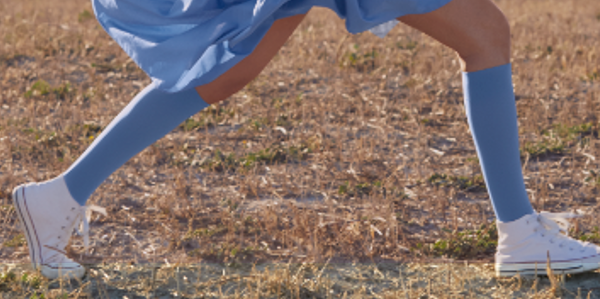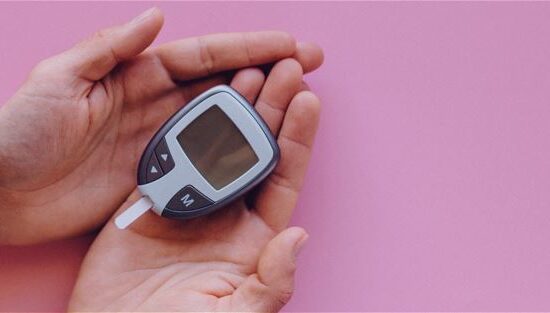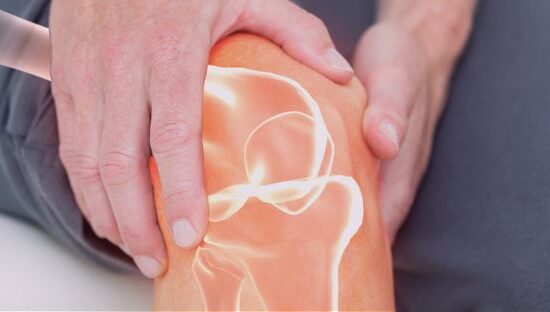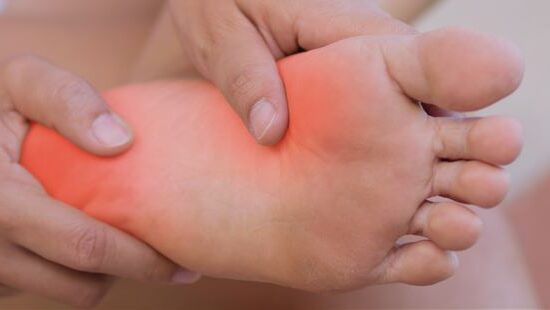Lymphedema appears in the legs, arms or elsewhere on the body. It is characterized by swelling in the affected area.
What is lymphedema?
Lymphedema is a swelling of the tissue in which an abnormal amount of fluid has accumulated. When the lymphatic vessels—which collect and drain lymph (liquid)—are unable to do their job, the vessels become clogged.
This causes the affected area to swell. Lymphedema is often accompanied by a sensation of heaviness and stiffness. It may also lead to pain.
Causes of lymphedema
Lymphedema is a condition that can be caused by poor development of the lymphatic system. Injury can also damage and slow down this system.
Lymphedema can be caused by two types of situations:
- Primary lymphedema is a rare condition where lymphatic system dysfunction is congenital. Symptoms tend to appear later and rather randomly.
- Secondary lymphedema is more common. It is essentially the result of an injury or surgery. It may also appear following radiation therapy for cancer.
Lymphedema is a chronic condition that requires regular treatment and can be controlled.
What can cause lymphedema
People who have undergone surgery are more likely to develop lymphedema.
People who have undergone physical trauma or suffer from chronic venous insufficiency are also at risk. People living with morbid obesity are also at greater risk of developing lymphedema.
Radiation therapy used to fight some cancers increases the risk of lymphedema. People who have had groin or armpit surgery are particularly at risk. The more invasive the treatment, the higher the risk.
Symptoms of lymphedema
The first signs of lymphedema are visible to the naked eye. They may vary depending on the severity of the problem. They include swelling of the affected area, whether an arm or a leg, fingers or toes.
Lymphedema sometimes produces a continuous sensation of pain or even burning in the affected area. The limb may appear heavy, feel tight and look more swollen than normal. The skin becomes stiffer or smoother.
You may also have difficulty properly moving the joint or limb affected by lymphedema, or feel that your clothing is too tight.
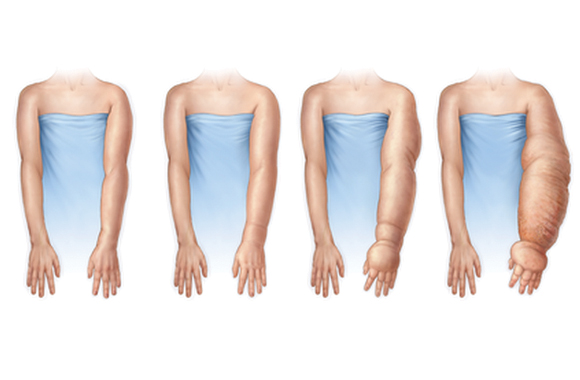
How can lymphedema be prevented?
Exercise is a good way to reduce the risk of lymphedema. It is recommended to start slowly and then gradually increase the duration or intensity of exercise.
Eat a proper diet to avoid weight gain. Also avoid prolonged exposure to extreme temperatures.
Prevent any form of constriction of a part of your body. For example, avoid carrying a cross-body bag that’s too heavy. Clothing and jewellery that are too tight are not recommended. Crossing your legs when sitting is also not recommended.
If you have lymphedema, there are some things you can do to help minimize its impact on your health. For example:
- Note the appearance of redness, swelling, irritation and itching. Also watch for any sudden rise in the temperature of part of your body.
- Protect the skin in the area affected by lymphedema by wearing gloves, socks, etc. This will reduce the risk of infection.
Who should you see for lymphedema?
If you think you have lymphedema, talk to a doctor. They can help you find the cause of the problem by going over your history and health. They might do a physical exam, such as measuring one limb against the opposite limb.
The physician will then determine the severity of the lymphedema and the most appropriate treatment. You may also need to undergo imaging to get a more accurate diagnosis.

